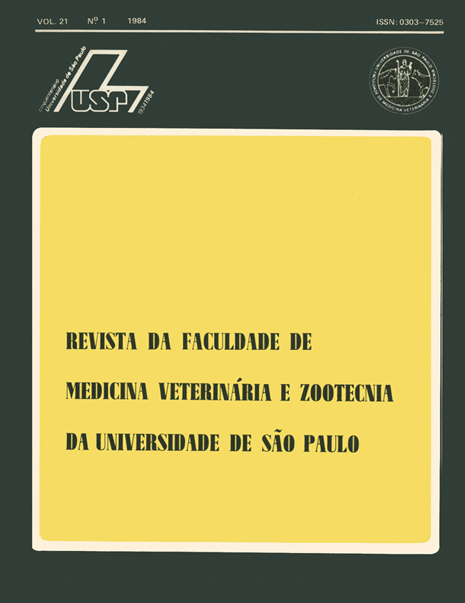The effect of corticosteroid administration in dogs experimentally infected with street rabies virus through the intramuscular rout
DOI:
https://doi.org/10.11606/issn.2318-3659.v21i1p51-56Keywords:
Corticosteroids, Dogs, Immunosupressive agents, RabiesAbstract
Sixteen dogs (1 -2 years old and 8 -1 0 kg) were used. Nine of them were individually treated with 25 milligrams/day of hydrocortison acetate through the subcutaneous route three days before and on the day of rabies virus inoculation. Seven dogs were used as controls being not treated with hormone. Results showed that eight animals presented signs of rabies and died from 13 to 23 days after challenge, all of them were positive for rabies tested by the immunofluorescence and mouse inoculation tests; only one of these dogs belonged to the control group. The remaining eight animals without signs of the disease (six of them not treated with hormone), were sacrificed from 38 to 88 days after the virus challenge being observed that they were negative for the same rabies laboratory tests described above. Thus the number of dogs positive for rabies was significantly higher in animals treated with corticosteroid hormone.


